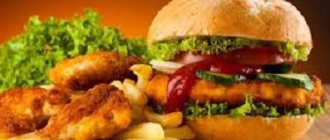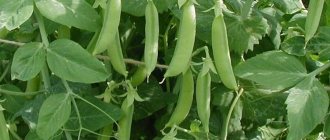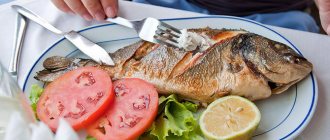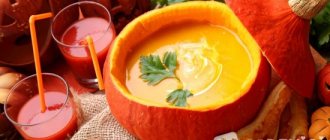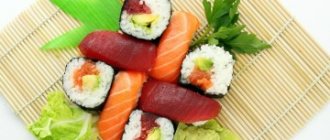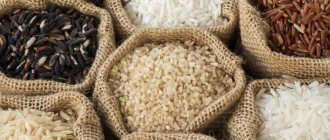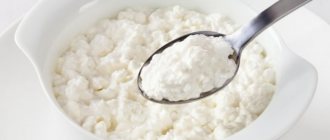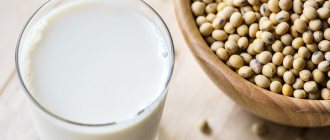Beneficial features
Potatoes, which are completely ordinary and familiar to everyone, are a storehouse of useful substances. Its rich composition contains a significant amount of proteins and phosphorus, as well as amino acids necessary for the functioning of the body.
Potatoes are famous for their high content of phosphorus and potassium. Potassium actively participates in metabolic processes, promoting the removal of excess fluid from the body. This property is useful for people suffering from heart and kidney diseases, whom doctors and nutritionists advise to follow a special potato-egg diet.
Vitamin C, contained in large quantities in potatoes, helps maintain the elasticity of blood vessels and also reduces the risk of respiratory diseases. The beneficial effects of vitamin C on the nervous system are also known. In addition to vitamin C, potatoes contain vitamins B, A, E and PP.
Potatoes are one of the healthiest vegetables that help fight stomach and intestinal diseases. And the most famous component of its composition - starch - even helps improve memory by reducing cholesterol in the blood and liver.
Boiled potatoes
Boiled potatoes retain the beneficial properties and calorie content of the vegetable almost unchanged. The nutritional value decreases slightly, and the calorie content of the dish remains within 70-80 calories. Boiled potatoes are considered an excellent source of potassium and phosphorus.
The ability to cook potatoes is one of the most necessary skills for modern housewives. When preparing boiled potatoes, consider the following points:
- peeled potato tubers should be cut into medium-sized pieces: potatoes in this form will cook faster (than whole tubers), without losing a large amount of nutrients (like very small pieces);
- You should start cooking the potatoes in cold water, which will only lightly cover the tubers;
- The cooking time for potatoes is 25-30 minutes, but it can be reduced slightly by adding a small piece of butter to the water;
- It is best to salt potatoes at the end of cooking;
- It is better to start cooking young potatoes over low heat, checking their readiness, otherwise they may turn out watery.
Myths about the calorie content of potatoes
- Potatoes contain a lot of starch, they make you fat . This is not true, the composition of the product is not as important as the calorie content of the product. Boiled potatoes are lower in calories than pasta, buckwheat or rice.
- Fried potatoes lead to obesity. Yes, indeed, potatoes fried in oil have a high calorie density due to the oil. But the amount of food consumed is important here. If you meet your daily caloric intake, then fried potatoes will not make you fat. You might even lose weight.
- Potatoes cause hunger. This is not true, potatoes are a dense product that allows you to forget about the feeling of hunger for a long time. It can be used to regulate eating behavior very well.
- There is nothing healthy in potatoes, pure starch. This is also a myth, and in the next section of this article we will analyze the composition of this wonderful product with all the details.
French fries
The calorie content of French fries covers a quarter of the daily caloric intake needed by a person. Per 100 grams of potatoes prepared in this way, there are about 400 kilocalories.
Making golden crispy French fries at home is quite easy. In a saucepan with a thick bottom, the oil is heated to 180 degrees (when a potato block gets into this oil, it should sizzle and float to the surface). Cut into strips, washed, salted and dried potatoes are placed in oil for 3-4 minutes, and then removed with a slotted spoon. Excess oil is removed with a napkin.
Jacket potatoes
Jacket potatoes are potatoes that remain in their skins during cooking. To prepare a vegetable in its uniform, you should select tubers of approximately the same size, wash them and fill them with cold water. The water must be salted so that the potato skins do not crack during cooking. There are other ways to keep the “uniform” safe and sound:
- after the water in which the potatoes are cooked boils, reduce the heat;
- the total cooking time should be about 25 minutes;
- Before cooking, the tubers can be carefully pierced with a fork several times.
The calorie content of 100 grams of jacket potatoes does not exceed 74 kcal. The dish boasts a high content of potassium and magnesium, and is also allowed for consumption during diets.
Calorie content of the product
Considering numerous tables of caloric content of products, the fact of the presence of 80 kcal per 100 grams of potatoes is revealed. But the figures presented are for the boiled type of product - in water with a small amount of salt, but without adding oil. Depending on the cooking method, the calorie content of potatoes varies. For example, you should not eat chips made from potatoes in large quantities, since their calorie content is several times higher, unlike a boiled product (the energy value is even lower).
Video
Raw
Raw potatoes are rarely consumed, but they are useful for constipation, heartburn, and nausea. Due to the high starch content, this product is characterized by the presence of bitterness, so it is boiled with the addition of salt and butter. The calorie content of potatoes per 100 grams in their raw form is 80 kilocalories. But at the same time, a young tuber contains only 60 kilocalories. Everything is explained by the lower starch content in the tuber.
Please note: Young potatoes can boast a higher vitamin C content than mature fruits. But it is noted that heat treatment removes up to 70% of the available vitamin. Otherwise, the ratio of BJU does not change, regardless of the method of preparing potatoes.
Stewed
The calorie content of stewed potatoes is 103 kilocalories, which is determined by adding a small amount of oil. The dish can be varied if you add vegetables, mushrooms and a small amount of spices to it - per 100 grams you get only a little more than 70 kcal if stewed without adding oil. This is an excellent dietary product that can be eaten for lunch. If you stew potatoes with meat, its calorie content doubles. Adding sauce or cream 10% helps to obtain up to 155 kcal per 100 g of cooked dish.
Boiled potatoes without peel
The calorie content of boiled potatoes without peel is no more than 80 kcal. The figures presented are based on avoiding butter or vegetable oil. If the potatoes are pre-soaked and boiled without peeling, and then a small piece of butter is added, the energy value increases to 120 kilocalories per 100 g of product. Potatoes with butter in small quantities are perfect for dietary nutrition. You can diversify the dish by adding fresh vegetables, even if they are seasoned with vegetable oil and served as a salad.
Boiled in peel
The second name for boiled potatoes in their skins is “in their jackets.” This cooking method is used in most cases when it is necessary to boil potatoes for a salad or other dish. But the invaluable benefit of potatoes lies in the peel - it contains a large amount of vitamins, which are activated during heat treatment and penetrate into the tuber itself.
Please note: Moreover, the calorie content of potatoes is reduced - boiled potatoes contain no more than 80 kilocalories per 100 g of product.
Practical advice: To easily peel jacket potatoes, immediately after removing the pan from the heat, place them under cold water (cool as you cool boiled eggs). You can then remove the entire peel in a matter of seconds.
Baked potato
The energy value of baked potatoes also differs depending on whether they are cooked with or without skin. In this case, the following indicators are distinguished: baked potatoes with peel have more kilocalories (with peel - about 80 kcal, and without peel - only 70 kcal). At the same time, baked potatoes with peel contain more useful substances, namely potassium. This microelement improves the functioning of the cardiovascular system, helps remove excess water and deposited salts from the human body.
Video
Fried in vegetable or butter
It is a mistake to believe that potatoes fried in oil do not benefit a person, but only contribute to excess weight gain. This dish has nothing to do with healthy eating, but its energy value is estimated at only 204 kcal per 100 grams. If you use lard for frying, which is previously melted in a frying pan, then the nutritional value increases to 212 kcal. It is not recommended to use lard for frying - this will increase the calorie content to 225 kcal per 100 grams.
Please note: The harm from such potatoes lies in the large number of carcinogens that are produced by the interaction of starch with vegetable or butter. This helps to increase the number of cholesterol plaques, which prohibits people with pathologies of the cardiovascular system from eating fried potatoes.
Mashed potatoes
Mashed potatoes contain only 106 kcal per 100 grams of dish. The calorie content of crushed potatoes increases due to the content of butter and milk in the dish. The energy value can be reduced if the water in which the potatoes were boiled is not drained, but pureed with the addition of butter.
French fries
French fries are high in calories and lack nutritional value. There are more than 400 kcal per 100 grams, so it is recommended to eat such potatoes as a main dish, without adding numerous and high-calorie sauces, cutlets and steaks. The benefit of such potatoes is that they quickly fill you up in small quantities. A serving of 100 grams will be enough for an adult. But it is not recommended to purchase such dishes at fast food kiosks, as they are harmful. It is better to cook French fries at home using fresh vegetable oil and a minimal amount of additives - just salt.
Video
Chips
Chips are the most harmful potato product, so they should not be consumed regularly or in large quantities. 100 grams of chips contain more than 500 kilocalories (some manufacturers indicate about 600 kcal), which are deposited under the skin in the form of fat cells. This is explained by replacing potatoes with soy starch, rice flour and other auxiliary ingredients. Together with the vegetable oil used for cooking, they produce a caustic mixture that destroys the walls of the stomach.
Please note: A standard pack of chips is about 80 grams, which is more than 400 kcal. Consuming the entire amount will cause stomach pain.
Baked potato
100 grams of potatoes baked in the oven contain only 80 kilocalories. Among all potato dishes, this option has a fairly low energy value.
There are many options for preparing baked potatoes:
- classic with golden crust;
- jacket potatoes baked in foil;
- baked wedges (country style potatoes, Idaho);
- potatoes with fillings.
The classic recipe suggests cooking peeled potatoes in the oven for 30-35 minutes at 180 degrees. A golden crust will appear on the potatoes only if each potato is first dipped in oil.
Useful tips
- Most of the nutrients in potatoes are located just under the skin, so you need to use a vegetable peeler.
- You should eat young potatoes. The longer the potatoes have been stored, the more calories they contain.
- Potatoes will turn out tastier if you add dill during cooking.
- Old sprouted potatoes should not be boiled with their skins on, because a very harmful substance called solanine accumulates underneath them. To avoid harm to health, it is peeled in a thick layer, then the potatoes are cut into several parts and boiled in salted water with the addition of 2-3 cloves of garlic. Afterwards, the water is drained.
- Green potatoes are not eaten, since solanine has already penetrated quite deeply in this case.
- The water in which fresh and peeled potatoes have been boiled is often used for broths and sauces.
- To prevent the potatoes from boiling soft during cooking, add two tablespoons of brine or a few drops of vinegar to the water.
- When interacting with potatoes, you should use a stainless steel knife, since vitamin C is destroyed upon contact with iron.
- If you put a piece of margarine in the water during cooking, the potatoes will cook faster.
- Most of the nutrients in potatoes are located just under the skin, so you need to use a vegetable peeler.
- You should eat young potatoes. The longer the potatoes have been stored, the more calories they contain.
- Potatoes will turn out tastier if you add dill during cooking.
- Old sprouted potatoes should not be boiled with their skins on, because a very harmful substance called solanine accumulates underneath them. To avoid harm to health, it is peeled in a thick layer, then the potatoes are cut into several parts and boiled in salted water with the addition of 2-3 cloves of garlic. Afterwards, the water is drained.
- Green potatoes are not eaten, since solanine has already penetrated quite deeply in this case.
- The water in which fresh and peeled potatoes have been boiled is often used for broths and sauces.
- To prevent the potatoes from boiling soft during cooking, add two tablespoons of brine or a few drops of vinegar to the water.
- When interacting with potatoes, you should use a stainless steel knife, since vitamin C is destroyed upon contact with iron.
- If you put a piece of margarine in the water during cooking, the potatoes will cook faster.
Any boiled food is always healthier than fried food. Cooking does not lead to the formation of high concentrations of substances harmful to the body in products. Potatoes not only do not become unhealthy food, but also maintain a calorie content close to natural, that is, at a level of 70 to 80 kilocalories.
During the cooking process, the energy value certainly decreases, but only by a small amount. In order for the body to receive the required amount of phosphorus, carbohydrates, and potassium, it is enough to eat 300 g of boiled potatoes per day.
We suggest you read Proper nutrition in the morning, what is better to eat for breakfast
But by adding other vegetables and seasonings, even to a boiled product, you can increase the nutritional value:
- 100 grams of boiled potatoes with butter contains 130 kcal.
- If you add mushrooms to the dish, the calorie content will be 105 kcal.
- Potatoes with vegetable oil and herbs or garlic will add 125 kcal.
- 100 grams of a dish with lard and smoked meats will be 175 calories.
Considering how many calories are in boiled potatoes, we can say that this dish will not spoil your figure and will not “deposit” on the sides.
Potatoes in our region are rightfully considered the second bread, because they are present in one form or another on the table of every family. Therefore, when switching to proper nutrition, it can be very difficult to give up potatoes. Moreover, it is a very healthy product: the skin of baked potatoes contains a large amount of vitamin C, the vegetable itself contains vitamins such as C, B, E, PP and K, as well as magnesium, calcium and zinc. It is recommended for use by those who suffer from high or high cholesterol.
Potato chips
There are so many recipes and ways to make real potato chips. All you need to try each method is 100 grams. potatoes. How much oil and spices to add is up to the cook to decide.
Potato chips can be cooked on the stove, in the oven, or even in the microwave. The classic recipe suggests baking the delicacy in the oven:
- in spicy oil (olive or unrefined sunflower) with garlic and dill, soak potatoes cut into slices for about half an hour;
- potato mugs are laid out on a baking sheet with paper in one layer, you can add salt and pepper if desired;
- the baking sheet goes into the oven preheated to 200 degrees;
- Cooking time for chips: from 20 minutes (depending on how crispy the chips should be).
Potato chips are a very high-calorie product. The calorie content per 100 grams of potatoes is about 500 kcal.
Boiled potatoes and mashed potatoes on a diet
There is an opinion that eating potatoes is the reason for the appearance of extra pounds. This is justified if you overuse fried potatoes in oil, seasoning them with high-calorie sauces, adding butter to mashed potatoes. On the contrary, boiled potatoes or in their skins without salt will help normalize and maintain weight, cleanse the intestines of toxins.
The vegetable is well absorbed by the body , and starch is broken down into simple sugars and does not affect the gain of extra pounds. In addition, the vegetable has low calorie content (86 kcal per 100 g of product), contains virtually no fat, but is rich in carbohydrates and proteins.
To preserve valuable substances , the tubers should be boiled in a small amount of purified water. You should not soak potatoes in water for a long time first, as their taste and nutritional qualities change.
The potato diet is based on eating potato dishes prepared with minimal calories, without salt, butter, or milk. The effectiveness of the diet will be increased by fresh vegetables and low-fat kefir, which will protect against bloating and gently and gently cleanse the intestines.
There are several options for losing weight on potatoes : a fasting day and a diet lasting from 3 to 7 days. A fasting day allows the consumption of 1.5 kg of young boiled potatoes in their skins, divided into 4-5 meals. It is allowed to season the potatoes with herbs: dill, parsley, basil, onion. It will take up to 1.5 kg per day. You can use this technique no more than twice a month.
It is recommended to drink plenty of fluids between meals . This could be non-carbonated purified water, green tea without sugar, or herbal tea. It is useful on such a day to drink 200 ml of potato juice made from raw tubers. The juice has a pronounced anti-inflammatory effect, normalizes the functions of the urinary system, stimulates intestinal function, and rids the body of toxic substances.
Reference. Nutritionists recommend spending a fasting day on boiled potatoes for people suffering from hypertension, atherosclerosis, nephritis, and heart failure.
The three-day potato diet is ideal for those who want to quickly lose a few kilograms. During this time, consume no more than 500 g of boiled potatoes without oil and salt, drink at least 2 liters of water per day and unsweetened green tea.
The seven-day diet is more difficult to tolerate , so you can add low-fat dairy and fermented milk products, chicken eggs, fresh vegetables (cabbage, peppers, carrots, asparagus, cucumber) to the menu. To diversify your diet, potatoes can be baked, boiled in pieces or in their skins. If you are very hungry, you can allow yourself 100 g of dietary meat, if you want something sweet - a handful of prunes, raisins or dried apricots, 1 tsp. honey It is recommended to consume the liquid in the same amount - 1.5-2.5 liters of water per day. On average, in a week you can get a good result - minus 2-5 kg.
At the end of the potato diet , in order to consolidate the effect, familiar foods are introduced gradually and in small quantities. It’s better to start with apples, citrus fruits, brown rice, whole grain bread, and after 15-20 days include the rest of the “right” foods. The ban includes alcohol, flour, sweets, fatty and fried foods, spices, white pasta, sausages, semi-finished products, and fast food.
Puree
The calorie content of mashed potatoes largely depends on the energy value of the milk added to it and averages 83 kcal per 100 grams.
The algorithm for preparing mashed potatoes is extremely simple. Simply boil the potatoes, mash them and add milk (preferably hot) and a little butter to the resulting mass.
Source: tony.ru
Listed below are the nutrient standards that apply to the site.
| Nutrient | Norm |
| Essential Nutrients | |
| Squirrels | 75 g |
| Fats | 84 g |
| Carbohydrates | 310 g |
| Calories | 2 300 kcal |
| Minerals | |
| Calcium | 1,000 mg |
| Iron | 10 mg |
| Magnesium | 400 mg |
| Phosphorus | 700 mg |
| Potassium | 4,700 mg |
| Sodium | 1,300 mg |
| Zinc | 11 mg |
| Copper | 0.9 mg |
| Manganese | 2.3 mg |
| Selenium | 55 mcg |
| Fluorine | 4,000 mcg |
| Vitamins (fat soluble) | |
| Vitamin A | 900 mcg |
| Beta carotene | 5,000 mcg |
| Alpha carotene | 5,000 mcg |
| Vitamin D | 15 mcg |
| Vitamin D2 | 7.5 mcg |
| Vitamin D3 | 16.25 mcg |
| Vitamin E | 14.6 mg |
| Vitamin K | 120 mcg |
| Vitamins (water soluble) | |
| Vitamin C | 90 mg |
| Vitamin B1 | 1.2 mg |
| Vitamin B2 | 1.3 mg |
| Vitamin B3 | 16 mg |
| Vitamin B4 | 500 mg |
| Vitamin B5 | 5 mg |
| Vitamin B6 | 1.3 mg |
| Vitamin B9 | 400 mcg |
| Vitamin B12 | 2.4 mcg |
| Amino acids | |
| Tryptophan | 0.8 g |
| Threonine | 2.4 g |
| Isoleucine | 2 g |
| Leucine | 4.6 g |
| Lysine | 4.1 g |
| Methionine | 1.8 g |
| Cystine | 1.8 g |
| Phenylalanine | 4.4 g |
| Tyrosine | 4.4 g |
| Valin | 2.5 g |
| Arginine | 6.1 g |
| Histidine | 2.1 g |
| Alanin | 6.6 g |
| Aspartic | 12.2 g |
| Glutamic | 13.6 g |
| Glycine | 3.5 g |
| Proline | 4.5 g |
| Serin | 8.3 g |
Source: FitAudit.ru
Chemical composition, microelements and characteristics of potatoes
Potato is a herbaceous plant of the Solanaceae family . Its tubers are an important food product, consumed on all continents in millions of tons per year.
Attention! Green fruits are inedible because they contain the alkaloid solanine. This organic substance protects the plant from damage by bacteria and some types of insects, but its high doses are toxic to the human body. Removing the peel to a depth of more than 1 cm and long-term heat treatment keep the fruits suitable for consumption.
There are over 5 thousand varieties of potatoes , characterized by resistance to diseases and pests, short ripening periods, and high yields. All varieties are conditionally divided into four groups: table, fodder, technical and universal. The most popular table varieties have oval or round tubers with eyes, tender pulp and a starch content of no more than 18%.
The chemical composition and nutritional properties of tubers depend on the variety, climatic and weather conditions, agricultural technology, soil type, storage time and conditions. With proper heat treatment, the beneficial substances of potatoes are practically not lost.
On average, boiled potatoes without peel and salt contain:
- water - 77 g;
- proteins - 1.7 g;
- fats - 0.1 g;
- carbohydrates - 18.2 g;
- dietary fiber - 1.8 g;
- ash - 0.72 g;
- starch - 14.2 g.
The biological value of potatoes as a food product is determined by vitamins . The tubers contain carotene (provitamin A), B vitamins (thiamine, riboflavin, choline, pantothenic acid, pyridoxine, folate), ascorbic and nicotinic acids, vitamin E and K, and betaine.
The acidity of potato juice depends on the content of organic acids . The tubers are richest in citric acid, in smaller amounts - oxalic, lactic, malic, tartaric, isocitric, and chlorogenic. The acidity level for potatoes is set at 5.6-6.2. Fats make up an average of 0.15% of wet weight and are represented by palmitic, linoleic, and linolenic acids.
Boiled potatoes are a valuable source of minerals . Tubers contain calcium, potassium, magnesium, sodium, phosphorus, as well as trace elements - copper, manganese, iron, selenium, zinc. The mineral composition of the raw product is more diverse and also includes silicon, sulfur, chlorine, aluminum, boron, vanadium, iodine, cobalt, lithium, molybdenum, nickel, rubidium, strontium, chromium, zirconium.
How much sugar is in boiled potatoes
Sugars in potatoes are represented by digestible carbohydrates (per 100 g of product): sucrose - 0.18 g, fructose - 0.28 g, glucose - 0.33 g. Mature tubers contain little sugar, from 0.5% to 1. 5%, but it can accumulate up to 5-6% or disappear completely.
The decisive factor is air temperature, duration and storage conditions . So at a temperature of +10°C, 3.58 mg of sugar is formed in 100 g of potatoes and the same amount is consumed. At lower temperatures (0-10⁰C), sugar accumulates in the tubers to a certain level, after which it remains unchanged. The most favorable storage temperature will be above +10⁰С, when more sugar is consumed than accumulated.
Sugar levels also depend on the potato variety . On average, 100 g of boiled potatoes contains 0.8 g of sugar, respectively, 1 kg - 8 g.
Reference. A higher concentration of sugar in tubers adversely affects its taste and beneficial qualities: a sweet taste appears, potatoes darken when cooked.
The benefits and harms of potatoes
Raw potatoes are not only an affordable product from which you can make many dishes for lunch and dinner. Why is root vegetable so important for our health? Among the unique beneficial properties of fresh potatoes it is worth noting:
- relieving itching;
- elimination of inflammation;
- reduction of edema;
- wound healing;
- normalization of blood pressure;
- increased performance;
- relief from anxiety, stress, panic attacks.
The vegetable also perfectly treats ulcers, migraines, female pathologies, burns, headaches, hypertension, and eczema. The product effectively copes with stomach ulcers, nausea, problems with stool, and heartburn. It can be used in the diet of people with vascular and cardiac diseases.
This affordable and simple food has proven itself in the treatment of arthritis and hemorrhoids. The root vegetable helps with muscle cramps and kidney disease. According to many doctors, raw potatoes (juice) are an excellent prevention of cancer.
You can use the product in the treatment of boils, ulcers, and acne. It helps with joint diseases. But the root vegetable is also an excellent remedy for facial skin care. The product treats rashes and acne. Eliminates rashes, promotes cell regeneration. Evens out the complexion, making it more fresh and rested, eliminates dryness, removes fine wrinkles. Makes skin smoother, more even, elastic, and youthful.
Photo source: shutterstock.com
But, like any other food, potatoes have not only positive sides. What are the contraindications for its use? If you uncontrollably include raw potatoes in your diet, this will lead to the accumulation of alkaloids and provoke:
- nausea;
- heart rhythm failure;
- disturbances in the gastrointestinal tract;
- migraine;
- convulsions;
- vomiting
It is also recommended to refrain from consuming the product for people with colitis, gastritis, enteritis, severe diabetes, allergies, urolithiasis, and acute pathologies in the development of the gastrointestinal tract. You should also avoid including vegetables in your diet if you have an individual intolerance to the product, intestinal gas, or excess weight.
How to cook correctly?
In order not to destroy all the beneficial properties of potatoes, you need to learn how to cook them correctly:
- Before cooking, the product is poured with so much water that it only covers the tubers no more than the thickness of a finger. A large amount of liquid dissolves all useful substances. This also applies to jacket potatoes.
- After boiling, the heat on the stove should be reduced so that the product is only slightly simmering.
- When boiling potatoes, the lid of the pan should be slightly open so that the water does not boil away.
- Without a lid, the root vegetable will take much longer to cook.
- After peeling, potatoes should not be in water for more than half an hour.
We suggest you find out how much sugar is in quiche misch grapes
Now it is difficult to imagine that three centuries ago people did not know culinary dishes from this delicious vegetable. Nowadays, potatoes have long become a common food. And perhaps some will shrug their shoulders skeptically: “Well, what else can surprise you?!” And he will be wrong. We will give you some useful tips.
- To make the potatoes tasty, put garlic or dill in the pan (if it is dried, wrap it in gauze).
- If the potatoes are boiled in their skins, add a few drops of vinegar to the water to prevent the skin from bursting.
- If you are going to boil potatoes in their jackets, wash the tubers thoroughly and be sure to immerse them in hot water. In this case, almost all minerals are preserved; they are associated with protein, which instantly coagulates in hot water and does not allow useful substances to be destroyed.
- If you do not have the opportunity to pour hot water over the potatoes, place them in cold water and quickly bring to a boil, then reduce the heat to low, add salt and cook under a tightly closed lid.
- To make the potatoes cook faster, add a little margarine or butter to the water.
- The duration of cooking potatoes is 15–20 minutes. It is better to cook tubers of the same size so that they are cooked at the same time.
- Pour water only to the top level of the potatoes and make sure that it does not boil too much.
- When boiling young or slightly sprouted potatoes, an unpleasant aftertaste of glycoalkaloids appears. You can avoid this in the following way: drain the water that has become hot (but not yet boiled) and fill it with new hot water.
- To prevent vitamin C from being destroyed during heat treatment of potatoes, it is necessary: do not reheat mashed potatoes (vitamin loss in fresh mashed potatoes is already 30%); When cooking, place the tubers in boiling salted water and cook over low heat under a tightly closed lid.
- Some varieties of potatoes become very mushy, even if you cook them over low heat. To prevent this from happening, you need to put three slices of pickled cucumber in the pan in which the potatoes are boiled, then the potatoes will remain intact and will not lose nutrients.
- Cook the potatoes over moderate heat so that they cook evenly. Potatoes cooked over high heat are raw on the inside and overcooked on the outside.
- To make the potatoes crumbly and tasty, after peeling them, pour salted boiling water over them and cook over low heat under the lid.
- You need to cook the potatoes over medium heat so that the starch swells evenly. At high heat, the outside of the potato bursts, but the inside remains raw.
- Mashed potatoes made from potatoes are much healthier than boiled potatoes cut into slices.
- Diced potatoes are boiled for 12–15 minutes.
- Potatoes with a high starch content boil so quickly that it is impossible to cook the vegetable whole even in highly salted water. In such cases, add cucumber or cabbage brine to the water, or better yet, a little vinegar.
- Jacket potatoes do not spoil for several days at room temperature if you salt them heavily when cooking.
- To prevent the potatoes from overcooking, boil them in a small amount of water, covered, for 10 minutes, then remove the lid and wait until all the water has evaporated.
- The puree will be tastier if the potatoes are cooked in vegetable or meat broth.
- To ensure that potatoes boiled in their jackets retain a pleasant aroma, peel them cold (with the exception of dishes that require the “warm” presence of potatoes).
- It is better to peel potatoes with a stainless knife, otherwise vitamin C is destroyed.
- Do not keep potato dishes in an aluminum pan for a long time.
- It is better to prepare soups and purees from mealy potatoes, which boil quickly when boiling.
- It is better to select uncooked potatoes for salad.
- For sweet foods, use the finest potato tubers.
- Throw the new potato tubers into a metal egg net, turn it in different directions under running water for a few minutes - and the potatoes are peeled.
- To make the mashed potatoes fluffy and tasty, before finishing cooking, completely drain the broth and place a little butter on the bottom of the pan. Cover the pan with a lid and place on low heat for 3 minutes. Next - traditional steps: knead, beat, gradually dilute with milk (1 glass per 1 kilogram).
- Jacket potatoes can be peeled much faster if you immediately pour cold water over them after boiling.
- If you peel the potatoes 1 hour before cooking, you can store them without water, covered with a clean, damp cloth.
- Place the peeled potatoes in cold water, otherwise they will darken when exposed to air. But do not keep chopped potatoes in water for a long time, in this case vitamin C, which the vegetable is very rich in, will dissolve in it.
- If you need potatoes for a side dish or salad, boil them in their skins.
- Do not dilute mashed potatoes with cold milk, in this case the mashed potatoes will turn out gray, use only hot milk. Young potatoes are not suitable for mashed potatoes. But you can make a delicious side dish from it by boiling the whole tubers and pouring sour cream sauce over them.
- Potatoes boiled without skins will turn out especially white if you add a little lemon juice to the water.
Composition and nutritional value of potatoes
The nutritional value of the product is due to the many vitamins and valuable minerals found in it. To make it easier to imagine their ratio, it is better to show the composition in table format:
| Substance name | Content (µg, g, mg) |
| Potassium | 426 |
| Phosphorus | 59 |
| Water | 80 |
| Vitamin B2 | 0,03 |
| Ascorbic acid | 11 |
| Sodium | 6 |
| Starch | 14,2 |
| Niacin | 1,1 |
| Magnesium | 22 |
| Folacin | 16,5 |
| Selenium | 0,4 |
| Thiamine | 0,08 |
| Vitamin K | 2,1 |
| Kholin | 13 |
| Calcium | 11 |
| Lutein+Zeaxanthin | 13 |
| Vitamin B6 | 0,24 |
| Iron | 0,7 |
When composing your diet, keep in mind that potatoes contain valuable amino acids and mineral salts (about 1% of the total composition). But sugar is also present in this food - about 2% of the total mass.
Photo source: shutterstock.com
You should also pay attention to the BJU of raw potatoes. The ratio of these components is represented by the following indicators:
- proteins - 1.89 g;
- fats - 0.1 g;
- carbohydrates - 15.9 g.
In turn, the lipids found in potatoes are only 0.5% of the daily value. Accordingly, 12% and 3% are indicators of carbohydrates and proteins from the daily needs of the human body.
Source: www.azbukadiet.ru
Composition of nutrients, BJU
Boiled potatoes
| For quantity: 100 grams | ||
| Calories — 84 | Calories in fat - 1 | |
| BJU | ||
| Total fat content | 0.1g | |
| Saturated | 0.03g | |
| Polyunsaturated | 0.04g | |
| Monounsaturated | 0g | |
| Cholesterol | 0mg | |
| Total carbohydrate content | 19.11 | |
| Dietary fiber | 2.37g | |
| Sugar | 0.9g | |
| Squirrels | 2.15g | |
| Vitamins and microelements | ||
| A - 0mcg | C - 8.53 mg | |
| B-6 – 0.27 mg | B-12 - 0mcg | |
| D - 0mcg | E - 0.02 mg | |
| Calcium 19mkg | Iron 2.23 mg | |
| Magnesium 24 mg | Zinc 0.34 mg | |
| Potassium 371 mg | Sodium 126 mg | |
Distribution of calories for BJU:Carbohydrates (89%) Fats (1%) Proteins (10%) | ||
And a little about secrets...
The story of one of our readers Alina R.:
I was especially depressed about my weight. I gained a lot, after pregnancy I weighed as much as 3 sumo wrestlers together, namely 92 kg with a height of 165. I thought the belly would go away after giving birth, but no, on the contrary, I began to gain weight. How to cope with hormonal changes and obesity? But nothing disfigures or makes a person look younger than his figure. At the age of 20, I first learned that plump girls are called “WOMAN” and that “they don’t make clothes that size.” Then at the age of 29, divorce from her husband and depression...
But what can you do to lose weight? Laser liposuction surgery? I found out - no less than 5 thousand dollars. Hardware procedures - LPG massage, cavitation, RF lifting, myostimulation? A little more affordable - the course costs from 80 thousand rubles with a nutritionist consultant. You can, of course, try to run on a treadmill until you go crazy.
And when will you find time for all this? And it's still very expensive. Especially now. Therefore, I chose a different method for myself...
Read more >>
Source: nadietu.net
Application
Cooked without butter or sour cream, boiled potatoes are an excellent dietary dish. Potatoes can be boiled in two ways - put whole tubers in water without peeling them, or peel and cut the potatoes into several parts. Potatoes boiled in their skins (“in their jackets”) retain more nutrients. Young potatoes should be immersed in already boiling water, and old ones, on the contrary, into cold water. Boiled potatoes are an independent dish and also go well with any fish and meat dishes.
Market Analytics
- COVID-19 is changing the rules of the game in the cosmetics market
- Beauty of the future: cosmetic innovations 2020
- New ingredients are the driving force of the cosmetics industry
Convenient search for beauty salons on our website
Beauty salons in Moscow Beauty salons in St. Petersburg Beauty salons in Ekaterinburg Beauty salons in Novosibirsk
Latest blog posts on our website
- Naturecream / Wrinkles Puppets
- Naturecream / PEPHA-TIGHT - instant skin lifting
- Naturecream / Blue light - a danger to the skin
- Naturecream / Cocoa Butter – A treat for the skin
- Naturecream / Trylagen - supports the entire collagen life cycle.
- Naturecream / Spring skin rehabilitation
- Naturecream / Cleavage - a woman's passport
- Naturecream / Anti-cellulite “Memo”
- Naturecream / Peptides instead of beauty injections.
- Naturecream / Microplastics in cosmetics
Latest forum topics on our website
- Mrs._Smith / Badly sunburned! What to do?((
- Ice / Is it necessary to combine fitness classes with a diet?
- Antonova / What can be used for hair loss?
- Radio operatorKat / Who was on a protein diet?
- Suzanna / Mesotherapy on the face
Other articles in this section
| Green beans Green beans belong to the legume family, a type of cowpea. This variety is believed to have originated in the southern Chinese province of Yunnan, and is sometimes called Chinese bean. Green beans are an annual climbing plant that require support for tying. Flexible pods of light green color vary in length from 30 to 80 cm. Oval-shaped seeds are dark red, white, and black. As a rule, the pods are collected immature. |
| Sweet corn on the cob The homeland of corn or maize is Mexico and Central America. Although this crop is classified as a vegetable, it is actually a grain crop. On the tall stems of the plant there are ears with grains. The most common types are white and yellow corn, but red, brown, blue and even purple varieties are also found. Yellow or sweet corn has a sweet taste. |
| Boiled zucchini The closest relative of zucchini, zucchini is a common vegetable crop in central Russia. The shape of the fruit resembles a cucumber, 12-40 cm long and 5 cm in diameter. Zucchini is covered with a thin edible peel, under which delicate white pulp and soft seeds are hidden. |
| Boiled cauliflower Cauliflower is an excellent dietary vegetable of the cruciferous family. In appearance, it is very similar to broccoli, only cauliflower florets are larger. Cauliflower is pale greenish in color because it lacks chlorophyll. |
| Garlic (arrows) Green shoots of garlic are usually called arrows. They resemble green onions. As the garlic shoots grow, they twist, forming 2-3 loops. Then flowers appear at the end. If fresh heads of garlic can be found at any time of the year, then green arrows are considered an early summer delicacy. Later they acquire a harsh, “woody” taste. |
| Beans Beans are the fruits of various plants of the legume family. These include lentils, soybeans, different types of beans and peas - in total more than 13 thousand plant species. Despite their small size, beans contain many nutrients, especially proteins. Beans are native to the Mediterranean and are a traditional crop in Greece. Due to their nutritional value, legumes are distributed throughout the world. Thus, in China, more than half of all cultivated land is devoted to legumes. |
| Plantain Plantain is a wild perennial plant. It is very unpretentious, grows in meadows, pastures, gardens, along roadsides - which is why it got its name. This is a low-growing plant with oval leaves collected in a rosette. There are more than 200 varieties of plantain around the world. All parts of the plant are edible. Plantain has been used in European medicine since the 15th-16th centuries. and was considered practically a panacea. It is even mentioned in the works of Shakespeare. |
| Mung beans Mung beans are known by many names - mung beans, golden beans, green soybeans, mongo beans. The Latin name of the plant is Vigna Radiata. Originally from Asia, mung bean is especially popular in the countries of India, Pakistan and Bangladesh. According to archaeological data, mung bean cultivation began in India as early as 1500 BC. This vegetable crop is also often used in China, Korea, Vietnam, Japan, and Southeast Asian countries. |
| White radish White radish is a juicy, oblong-shaped root vegetable with a pronounced pungent taste. Belongs to the cruciferous family and is a relative of cabbage, radishes, and broccoli. Not only the root vegetable is eaten, but also radish tops, flowers and seeds. This vegetable crop has been known for its healing properties since ancient times. In Asian countries, varieties of white radish such as daikon and Chinese (Margelan) radish are common. |
| Elecampane According to ancient Greek legend, elecampane owes its Latin name (Inula Helenium) to Helen of Troy. Where her tears fell, this medicinal plant grew. The ancient Greeks and Romans considered elecampane a panacea for many diseases. The plant reaches a height of more than a meter, the flowers resemble sunflowers, but are smaller in size. Grows in Europe, Asia, North America. |
Calorie content of McDonald's fries per 100 grams
The calorie content of McDonald's fries per 100 grams is 340 kcal. In 100 g of product:
- 5 g protein;
- 17.2 g fat;
- 41.9 g carbohydrates.
Despite the fact that McDonald's fries are enriched with iron, magnesium, potassium, phosphorus, and folic acid, doctors and nutritionists do not advise overusing such dishes. Such potatoes are completely excluded from the diet in case of chronic and aggravated diseases of the liver, pancreas, stomach, intestines, as well as in case of excess weight.
Nutritional value and calorie content of French fries
An average serving of French fries (115 g) contains:
- 382 kcal
- Proteins: 3.7 g
- Fat: 16 g
- Carbohydrates: 43 g
- Cholesterol: 0 mg
And also calcium, iron, magnesium, vitamins A, C and D, B6 and B12.
It is commonly believed that deep-fried potatoes contain a huge amount of cholesterol, but in fact this is just a common misconception. The reason for the high cholesterol content in foods fried in oil is hydrogenated vegetable oil with a large amount of trans fats. Regular vegetable oil is completely safe, and potatoes themselves do not contain cholesterol at all.
Calorie content of KFS French fries per 100 grams
The calorie content of KFS fries per 100 grams is 276 kcal. Per 100 gram serving:
- 3.83 g protein;
- 15.4 g fat;
- 30.2 g carbohydrates.
Read: Calorie content of artichoke gum
Such potatoes are served in 60-, 100-, 200-gram portions and are rich in vitamins B, PP, H, C. It is important to remember that KFS potatoes are a fatty, high-calorie dish that contributes to excess weight gain, increases levels of bad cholesterol in the blood, has a negative effect on the condition of the heart, blood vessels, and gastrointestinal tract.
Related Products
(91 kcal) (82 kcal) (70 kcal) (69 kcal) (93 kcal) (270 kcal) (213 kcal) (168 kcal) (74 kcal) (124 kcal) (58 kcal) (357 kcal) (268 kcal) (143 kcal) (125 kcal) (55 kcal) (77 kcal) (90 kcal) (106 kcal) (112 kcal) (79 cal)
Enter the amount of French Fries to calculate its nutritional value
| Property | Meaning | % of normal | |
| Calorie content, kcal | 274 | 13.7 | 13.7% |
| Proteins, g | 3,48 | 2 | 2% |
| Carbohydrates, g | 35,66 | 14 | 14% |
| Fats, gr | 14,06 | 31.82 | 31.82% |
The benefits of French fries
The beneficial properties of French fries are:
- French fries are rich in vitamins and minerals, quickly restore the energy balance in the body after heavy physical activity;
- When eating such potatoes, the level of the happiness hormone increases, preventing stress, apathy, and depression.
Read: Calorie content of coffee with cream without sugar
It should be noted that most of the other beneficial properties of French fries are far-fetched and not true. The product is seriously harmful to health, so if possible, avoid such dishes.
Source: horoshieprivychki.ru
Potatoes and weight loss
When mentioning the potato diet, many are surprised, because they know that this root vegetable is quite high in calories. But experts consider it, like all mono-diets, to be very effective. It is recommended to “go on” such a diet at the very end of summer, when new potatoes appear on the markets, which contain the maximum amount of various useful substances and very little starch.
Of course, the ideal option is potatoes from your own plot, but not everyone has this opportunity, so you will have to be content with purchased ones. Such a diet is not varied, so it is necessary to take a complex of vitamins and minerals in the process.
There are several options for the potato diet: quick, designed for 3 days, and weekly. The first one can be used as fasting days, but it is quite tough, although it allows you to lose up to two kilograms of weight.
The three-day potato diet involves drinking only a glass of milk without fat for breakfast, eating 250 grams of mashed potatoes, boiled in water and unsalted, for lunch, and for dinner – an egg, some greens with vegetable oil and 200 grams of boiled potato salad. You need to drink plenty of fluids, you can snack on kefir, also low-fat and very little.
This diet is not balanced, and the body experiences stress. It is recommended to use this potato diet once every four months.
